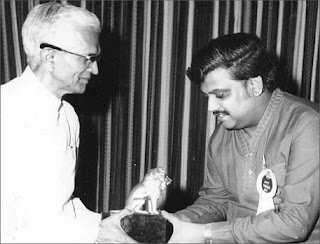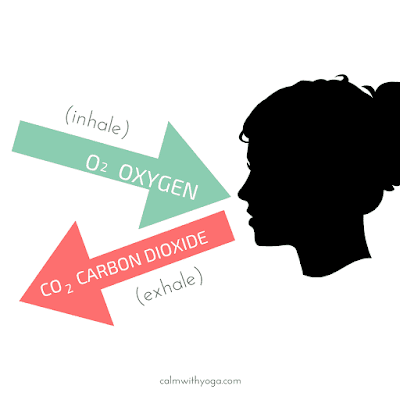எஸ்.பி.பாலசுப்ரமணியம் என்கிற எஸ்.பி.பி (SPB) என்னும் மூன்றெழுத்து மந்திரச்சொல்லை பற்றி அறிமுகம் செய்ய நான் ஒன்றும் அதிகப்ரசங்கியல்ல.
அவரை பற்றி நான் கொண்ட சில நினைவுகளையும் நான் கற்ற சில துளிகளைமட்டும் இங்கு பதிவிட விரும்புகிறேன்
நான் தத்தி தவழும் பருவத்தில் அதாவது எனக்கு இரண்டு வயது இருக்கும் பொழுது நான் அதிகம் பாடிய? (உளறிய) பாடல் ”அம்மன் கோவில் கிழக்காலே” திரைப்படத்தில் வந்த எஸ்.பி.பி அவர்கள் பாடிய ”சின்ன மணிக் குயிலே” என்ற பாடலை. இதை நான் ”கம்மணி கம்மணி” என பாடுவேன் என்று எனது பாட்டியார் கூறிய நினைவுகள் உண்டு. அதன் பின்பு நினைவு தெரிந்த நாள் முதல் எஸ்.பி.பி பாடல்கள் அன்றாடம் காதில் விழுந்துக்கொண்டே இருக்கும்.
நான் பள்ளியில் படிக்கும் பொழுது என் உள்ளுர நான் பாடிய பாடல் எனில் அது ”தர்மத்தின் தலைவன்” திரைப்படத்தில் எஸ்.பி.பி, பி.சுசீலா மற்றும் மலேசியா வாசுதேவன் அவர்கள் இணைந்துப் பாடிய “தென்மதுரை வைகை நதிப் பாடலை” தான். பல நாட்களுக்கு அதன் வரிகள் தெரியாது. அந்த மெட்டைமட்டும் பாடிக்கொண்டு இருப்பேன். கல்லூரி நாட்களில் ”புன்னகை மன்னன்” திரைப்படத்தில் வந்த ”என்ன சத்தம் இந்த நேரம்” போன்று பல பாடல்களை கேட்டே வளர்ந்தேன். குறிப்பாக ”இளையநிலா பொழிகிறது”, “பனி விழும் மலர்வனம்” ஆகிய பாடல்களை எனது கல்லூரி சீனியர்களுக்கு கொடுக்கப்பட்ட (மூத்தவர்கள்) பிரிவு உபச்சார நிகழ்ச்சியில் நண்பர்கள் (பத்மா, ஜூட், பரச்சன்ன தேவி மற்றும் சிலர்) உடன் பாடிய அனுபவமும் உண்டு. (அந்த கொடுமையெல்லம் நடந்ததா என்று தானே கேட்கிறீர்கள்) பசுமையான நினைவுகள். எனது கல்யாண நலங்கு வைபத்தில் நான் இரண்டு பாடல்களைப் பாடினேன் ஒன்று ”வாழ்வே மாயம்” படத்தில் வந்த ”நீல வான ஓடையில்” பாடல் மற்றொன்று “தளபதி” படத்தில் வந்த “சுந்தரி கண்ணால் ஒரு சேதி” பாடல். ரஜினியும் வந்தார்கள் கமலும் வந்தார்கள் எஸ்.பி.பி வழியாக.
இப்படி எஸ்.பி.பியின் பாடல்களை நாள்தோறும் கேட்டு முனுமுனுத்து வளர்ந்தவன் நான்.
அவரைப்போல் இந்திய இசைக்கும் இந்திய திரைப்பட இசைக்கும் பிரதிநிதி யாரும் இல்லை. 40000+ பாடல்களை பாடிய ஒரே பாடகர். அந்த சாதனையை இனியாராலும் முறியடிக்க முடியாது என்றே கூறுவேன். சச்சின் டெண்டுல்கரின் ரன் சாதனைகளில் சிலவற்றை விராட் கோலி கடந்து புதிய சாதனைகளை படைப்பார். ஆனால் எஸ்.பி.பியின் சாதனைகளை கடப்பது கற்பனையில் கூட நிகழாது எனலாம்.
அவரை போல் ஒரு உன்னதமான பணிவான ஆத்மார்த்தமான மனிதரை நான் கண்டதில்லை கேட்டதுஇல்லை. அவர் மேடையில் பாடுவதை தொலைக்காட்சிகளில் பார்த்தால் நமக்கு அப்படி ஒரு உத்வேகமும் நேர்மறை சக்தியும் கிடைக்கும். அவருடைய குழந்தைப்போன்ற குதுகலமும், நகைச்சுவையும், மகிழ்ச்சியும், கலகலப்பும், கள்ளம் கபடம் அற்ற சிரிப்பும், வாழ்கையின் மீது இருந்த நேசமும், அன்பும், பண்பும், பணிவும், மேன்மையும் வியக்கதக்கவை கற்றுக்கொள்ளவேண்டியவை. அவர் பாடகராக இருந்தும் அவர் உணவு மீதுக்கொண்ட அலாதிப்பிரியம் பற்றி கேட்பதுக்கூட சுவாரசியமான ஒன்று. அவர் கிரிக்கெட் பற்றி பேசுவதை சில சந்தர்பங்களில் தொலைக்காட்சிகளில் கேட்டு இருக்கிறேன். ஒரு பள்ளிக்கூட சிறுவனின் ஆர்வத்துடன் கிரிக்கேட் பற்றி பேசுவார். பெரியவராயினும் சிறியவராயினும் எல்லோருக்கும் மரியாதை கொடுத்தே பேசிவந்தார். அவருக்கு கோபம் வந்து பார்த்தது இல்லை பொதுவெளியில் கோபப்பட்டதாக கேள்விபட்டதுமில்லை.
அவரைப்போல் நேர்மையான மனிதரை காண்பதும் அரிது. குடும்ப வாரிசு ஊக்குவிப்பு அன்றாடமான திரைத்துறையில் தனது குடும்பத்தாருக்காக என்றும் சிபாரிசு செய்யாதவர். தனது நண்பர்களான இசையமைப்பாளர்களான இளையராஜா மற்றும் அதன்பின் வந்த இளைய தலைமுறை இசையமைப்பாளர்களான ஏ.ஆர்.ரஹ்மானிடம் தனது தங்கை எஸ்.பி.சைலஜா அல்லது தனது மகன் எஸ்.பி.பி.சரண் ஆகியோருக்கு என்றும் வாய்ப்புகள் கேட்டதில்லை. தனது நட்புறவுகளை என்றும் எளிதாய் எடுத்துக்கொள்ளாமல் நேர்மையாக இருந்தவர்.
எஸ்.பி.பி மிக மிக நேர்மறை எண்ணங்களை சக்தியை மற்றவர்களுக்குக் கொடுத்துக்கொண்டு இருந்த உன்னத மனிதர். அவர் வாயில் இருந்து ஒரு தவறான சொல்லோ செய்தியோ நான் கேட்டது இல்லை. அவர் வாயில் இருந்து மற்றவர்களைப்பற்றிய குறையோ அவமதிப்போ கேட்டது இல்லை. எல்லோரையும் ஊக்கப்படுத்திக்கொண்டே இருந்தவர் எஸ்.பி.பி அவர்கள். அவர் பல இசை போட்டிகளில் நடுவர்களில் ஒருவராக இருக்கும் பொழுதும் கூட எந்த ஒரு போட்டியாளர் மனதும் புண்படாமல் தான் தனது கருத்துக்களை கூறுவார். குறைகளாக கூறாமல் முன்னேற்றத்திற்கான படிகளாக கூறுவார். இதுவே சிறுவர்களாக இருந்தால் உங்கள் வயதில் நான் இந்த அளவுக்கூட பாடியதில்லை என்று கூறி தனது பாராட்டை வெளிப்படுத்துவார். ஒரு போட்டியாளர் நன்றாக பாடினாலோ அல்லது தான் மேடையில் அதிகம் பாடாத பாடலை தேர்ந்தெடுத்து நன்றாக பாடினாலோ மனதார பாரட்டும் குணம் கொண்டவர். அக்குணம் யார்க்கு வரும்? அதுவும் 40000+ பாடல்கள் பாடியவருக்கு வருகிறது என்றால் அது அனைவரும் கற்றுக்கொள்ள வேண்டியதே.
எல்லோரையும் பாராட்டும் குணம் படைத்தவர் ஆயினும் யாரைப்பார்த்தும் பொறாமை படாதவர். ஒருவேளை பொறாமையோ கர்வமோ இருந்தாலும் அது கற்கும் ரசிக்கும் மனநிலையில் இருக்கும் ஆரோக்கியமான ஒன்று தான். பொறாமை இல்லாமல் இருந்ததால் தான் அவரால் மனதால் ஆரோக்கியமாக இருந்தது. அதனால் தான் அவரது சங்கீதமும் குரலும் பாடலும் தூய்மையாக ஆத்மார்த்தமாக இருந்தது.
எஸ்.பி.பி பற்றி மற்றொன்று சொல்லவேண்டும் என்றால் அவர் பூசல்களையும் வம்புகளையும் சர்ச்சைகளையும் அறவே விரும்பாதவர். சில ஆண்டுகள் முன்பு வந்த சர்ச்சையும் மிக மிக தேர்ந்த ஒரு வல்லுநர்ப்போல் கையாண்டார். குறிப்பாக யார் மனதையும் புண்படுத்தாமல். அவர் அவ்விடத்தில் தடித்த வார்த்தைகளை பேசியிருந்தாலும் அவரை யாரும் குறைக்கூறி இருக்கமாட்டார்கள் ஏனெனில் அவரிடத்தில் நியாயம் இருந்தது. ஆயினும் அவர் சர்ச்சையை பெரிதாக்கவில்லை. பெரிதாக்க விரும்பவுமில்லை.
எஸ்.பி.பி யிடம் எல்லோரும் கற்றுக்கொள்ள வேண்டியது ஒன்று உண்டு. அவர் என்றும் இறைவனுக்கு நன்றித் தெரிவித்துக்கொண்டே இருந்தார். தனக்கு கொடுக்கபட்ட வாய்ப்புகளுக்கு அவர் நன்றி தெரிவித்துக்கொண்டே இருந்தார். உலகில் எதிர்மரை செய்திகள் பல இருந்தும் அவரை சுற்றி இருந்த நன்மைகளுக்கு நன்றி தெரிவித்துக்கொண்டே இருந்தார். மனிதர்களுக்கு அக்குணம் கண்டிப்பாக வேண்டும். தன்னிடம் இல்லாததை நினைத்தை வாழ்க்கையையும் நேரத்தையும் அழித்துக்கொள்வோர் அதிகம் இவ்வுலகில்.
அதுமட்டும் இன்றி எஸ்.பி.பி பற்றி அவர் மறைந்தப்பிறகு நான் வாசித்த செய்தி ஒன்று என்னை சற்று சிந்திக்க வைத்தது. 7-10-2020 ஆனந்த விகடனில் இருந்து “பாடகராகத் தன்னிறைவான வாழ்க்கை வாழ்ந்திருக்கிறேன். சில வருடங்களுக்கு முன் கடனிலிருந்து முழுவதும் மீண்டுவந்தேன். தினமும் 5 பாட்டு பாடிவிட்டு வீட்டுக்கு வந்தால் வீட்டு வாசலில் சேட்டு நிற்பான். ஆனா, நாளைக்கு வா என்று சொல்லும் நிலையை இறைவன் எனக்குக் கொடுக்கலை. அந்த அளவுக்கு என் குரலைக் கேட்டு வளர்த்துவிட்ட ரசிகர்களுக்குக் கைம்மாறு செய்ய இன்னொரு ஜென்மம் எனக்கு வேண்டும்!” என்பதே பாலுவின் மறு ஜென்ம ஆசை!”. அதாவது அவர் கொஞ்ச காலம் முன்பு நிதி நெருக்கடி அதாவது கடன் சுமைகளில் இருந்தார் (அவரது மகன் கீழ் நடந்து வந்த திரைப்பட தயாரிப்பு நிறுவனத்தில் சில திரைப்படங்கள் (நல்ல படங்கள் ஆயினும்) தொடர்ந்து தோல்வி அடைந்தததால் கடனில் தள்ளப்பட்டார்) என்றும் ஆனால் அவற்றை அடைத்துவிட்டார் என்றும். அத்தகைய நெருக்கடியான காலத்திலும் சேட்டுக்கள்(கடன்காரர்கள்) தினமும் வீட்டிக்கு வந்தால் அவர்களுக்கு காசுக்கொடுக்கும் நிலையில் ஆண்டவன் தன்னை தினமும் பாடவைத்துக்கொண்டு இருந்தான் என்று கூறுவாராம் எஸ்.பி.பி. அந்த நெருக்கடியிலும் கடவுளுக்கு நன்றி தெரிவித்துக்கொண்டு இருந்தார். அவர் 40000பாடல்களை பாடியப்பின்பும் பல நாடுகளுக்கு பலமுறை கச்சேரி நடத்தி வருமானம் ஈன்றும் அவருக்கு பொருளாதார நெருக்கடி என்றால் சில விஷயங்களை நாம் கற்றுக்கொள்ளலாம். நாம் என்றும் கடனில் தள்ளப்படும் சூழ்நிலைகளில் சிக்கிவிடக்கூடாது. மிக மிக எச்சரிக்கையாக இருக்க வேண்டும். ஒருவர் எவ்வளவு ஈன்றாலும் அல்லது கடனில் இருந்தாலும் அவற்றுக்கெல்லாம் ஒரு பொருளும் இல்லை. ஒருவரின் புகழ் அவர் செய்த செயலில் இருக்கிறது. எஸ்.பி.பிக்கு அவர் பாடிய பாடல்களில் இருந்தது. காலம் உள்ளவரை அப்பெருமை அவருக்கு இருக்கும். ஆதலால் பணக்காரர்கள் தங்கள் வசதியை நினைத்து கர்வப்படவேண்டாம். அவர் நிதியில் சற்று சராசரிக்கு மேலாக இருப்பினும் அவர் பெரிய பணக்காரர்களை விட பல பல நிலைகள் மேலே உள்ளார். ஏனெனில் பெருமைக்கும் ஏனை சிறுமைக்கும் தத்தம் கருமமே கட்டளைக்கல். எஸ்.பி.பி என்றும் பெருமைக்கு உரியவர்.
பத்து ஆண்டுகள் முன்பு விஜய் தொலைக்காட்சியில் வந்த காபி வித் அனு நிகழ்ச்சியில் எஸ்.பி.பி அவர்களும் அவரது நண்பர் கங்கை அமரன் அவர்களும் நண்பர்களாகவே பங்கேற்றனர். அவ்வளவு உற்சாகமான நிகழ்ச்சி. எஸ்.பி.பியை முழுக்க முழுக்க ஒரு குழந்தையாக பார்க்க வேண்டும் என்றால் அந்நிகழ்ச்சியை பாருங்கள். அதுப்போல் எஸ்.பி.பிக்கும் இளையராஜவுக்கும் உள்ள நட்பை பார்க்க வேண்டும் என்றால் 20-25 ஆண்டுகள் முன்பு தூர்தர்ஷன் / டி.டி.பொதிகையில் வந்த நேர்காணலை பார்க்கலாம். ஒரு சில ஆண்டுகள் முன்பு Zee தொலைக்காட்சியில் எஸ்.பி.பி ஒன்று கூறியிருப்பார். இந்த நூற்றாண்டில் (அதாவது அவர் வாழும் காலத்தில்) இந்திய இசையில் குறிப்பாக திரை இசையில் இளையராஜா எஸ்.பி.பி கூட்டணி தான் மிகச்சிறந்த கூட்டணி என்று. அதுப்போல் வேறு ஒன்றில்லை என்று. அது அவ்வளவு உண்மை. அதேப்போல் வேறு ஒரு கட்டுரையில் (07-10-2020 ஆனந்த விகடன் கட்டுரையில்) எஸ்.பி.பி கூறியதாக ஒன்றைப் படித்தேன்- எனக்காக(எஸ்.பி.பிக்காக) இறைவன் இளையராஜாவை படைத்தான். இளையராஜாவுக்காக இறைவன் என்னை (எஸ்.பி.பிபை) படைத்தான். அதுவும் உண்மை [“டேய் எனக்கு உன் அளவுக்கு பஞ்சமம் சட்ஜமம்... ராகம்லாம் தெரியாதுடா... அப்படியே ஹை பிட்ச்ல போறேன். பிசிர் தட்டுற இடத்துல சிக்னல் கொடு!”- இப்படித்தான் நோட்ஸ் கொடுக்கும் இளையராஜாவிடம் சொல்லுவார் பாலு. பெரும்பாலும் சொதப்பாமல் பாடி, “டேய் படவா, எங்கே கத்துக்கிட்டே இந்த வித்தைய?” என ராஜாவிடமே பாராட்டு வாங்கிடுவார் பாலு! “எனக்காகத்தான் ராஜா பிறந்தான்... அவனுக்காக நான் பிறந்தேன்!” - இதயத்தின் அடி ஆழத்திலிருந்து இந்த வார்த்தைகளை பாலு சொன்னபோது இந்தக்கூட்டணியின் ஆயிரக்கணக்கான பாடல்களின் முதல்புள்ளி நம் முன் மின்னலாய் வெட்டிச் செல்லும்].
40000 பாடல்களை பாடியுள்ளார். அவற்றில் ஒரு 5 சதவிகிதத்தை கூட நான் கேட்டு இருப்பேனா என்று தெரியவில்லை. ஆயினும் எனக்குப் பிடித்த சில எஸ்.பி.பி பாடல்கள் இங்கே பட்டியலிடுகிறேன்.
சின்ன மணிக் குயிலே
தென்மதுரை வைகைநதி
காதலின் தீபம் ஒன்று
சுந்தரி கண்ணால் ஒரு சேதி
மௌனமான நேரம்
கேளடி கண்மணி
கல்யாண மாலை கொண்டாடும் பெண்ணே
மாங்குயிலே பூங்குயிலே
வானில் எங்கும் தங்க விண்மீன்கள்
நிலாவே வா
வா வெண்ணிலா
நிலவு தூங்கும் நேரம்
மாடத்திலே கன்னி மாடத்திலே
கொஞ்சி கொஞ்சி
என்ன சத்தம் இந்த நேரம்
கால காலமாக வாழும் காதலுக்கு
சிங்களுத்து சின்ன குயிலே
சாமிக்கிட்ட சொல்லி வெச்சு
அடுக்கு மல்லித் தொடுத்து வெச்ச
வலையோசை கல கல
இளையநிலா பொழிகிறது
பனிவிழும் மலர்வனம்
ரோஜாவை தாலாட்டும் தென்றல்
நலம் வாழ எந்நாளும்
அடியே மனம் நில்லுனா நிக்காதடி
ஓ வசந்த ராஜா தேன் சுமந்த ரோஜா
மாலை சூடும் வேலை
அட மச்சம் உள்ள மச்சான புதுவித ரகம்
புஞ்சை உண்டு நஞ்சை உண்டு
உண்ணால் முடியும் தம்பி தம்பி
என்ன சமையலோ
முத்துமணி மாலை
இது ஒரு பொன்மாலை பொழுது
மன்றம் வந்த தென்றலுக்கு
மண்ணில் இந்த காதல் அன்றி
பொத்திவெச்ச மல்லிக மொட்டு
மனசு மயங்க மௌன கீதம்
துள்ளி துள்ளி நீ பாடம்மா
என்னவென்று சொல்லுவதமா
செம்பூவே பூவே பூவே
ஆணென்ன பெண்ணென்ன
வாழ வைக்கும் காதலுக்கு ஜே
ஒன்ன நினனெச்சேன் பாட்டுப்படிச்சேன்
ஸ்ரீ ரங்க ரங்க நாதனின் பாதம்
வனிதா மணி
என் ஜோடி மஞ்சகுருவி
ராக்கமா கைய தட்டு
காட்டுக்குள்ளே மனசுக்குள்ளே
ராகங்கள் பதினாறு
சந்தா காற்றே
பேச கூடாது
என்னைத்தொட்டு உன்னை தொட்டு
பச்சைமல பூவு
வெள்ளி நிலவே வெள்ளி நிலவே
வானிலே தேனிலா
மலையோரும் வீசும் காற்று
வா வா பக்கம் வா
சிட்டுக்குருவி வெக்கபடுது
நாத விநோதங்கள் நடன சந்தோஷங்கள்
இளமை இதோ இதோ
அந்திமழை பொழிகிறது
அதிகாலை நேரமே புதிதான காலமே
இன்னும் என்னை என்ன செய்யப்போகிறாய் அன்பே
இதழில் கதை எழுதும் நேரமிது
கண்மணியே கண்மணியே சொல்லுறத கேளு
கூ கூ என்று குயில் கூவாதோ
கண்மணியே பேசு மௌனம் என்ன கூறு
ஓ மானே மானே
சாந்துப்பொட்டு ஒரு சந்தனப்பொட்டு
ராமன் கதைக்கேளுங்கள்
ரம் பம் பம் ஆரம்பம்
சந்தைக்கு வந்த கிளி
சிறியப் பறவை
தோட்டத்தில பாத்திக்கட்டி
வா வா வா கண்ணா வா
உச்சி வகுடு எடுத்து பிச்சி வெச்சக்கிளி
தலையை குனியும் தாமரையே
தேன் பூவே பூவேவா
ஒரே நாள் உனை நான்
என் கண்மணி என் காதலி
இளமை என்னும் பூங்காற்று
கண்மணியே காதல் என்பது
மடை திறந்து
சத்தாம் போடதே முத்தம் போதாது
பூங்காற்று உன் பேர் சொல்ல
காதல் கவிதைகள் படித்திடும் நேரம்
எங்கிருந்தோ இளங்குருவி
ராஜாதி ராஜா உன் தந்திரங்கள்
ஆலப்போல் வேலப்போல்
அடி ராக்க முத்து ராக்கு
ஒரு நாளும் உனை மறவாத
சித்தகத்தி பூக்களே
சங்கீத ஜாதி முல்லை
வெள்ளிச் சலங்கைகள்
சங்கீத மேகம் தேன் சிந்தும் நேரம்
நெஞ்சுக்குள்ள இன்னாருனு சொன்னா புரியுமா
பட்டுக்கன்னம் தொட்டுக்கொள்ள ஒட்டிக்கொள்ளும்
பாடு நிலாவே தேன் கவிதை
பெண் மானே சங்கீதம் பாடிவா
சொர்க்கம் மதுவிலே
ஆயிரம் நிலவே வா
இயற்கை என்னும் இதய கண்ணி
வான் நிலா நிலா அல்ல
வண்ணம் கொண்ட வெண்ணிலவே
இதோ இதோ என் பல்லவி
எங்கேயும் எப்போதும்
சிப்பி இருக்குது முத்துமிருக்குது
நீல வான ஓடையில்
சங்கீத ஸவரங்கள்
சாதி மல்லி பூச்சரமே
சேலைக்கட்டும் பெண்ணுக்கொரு வாசம் உண்டு
சோகம் இனி இல்லை வானமே இல்லை
ஒரு காதல் தேவதை பூமியில் வந்தாள்
உனக்கென்ன மேலே நின்றாய் ஓ நந்தலாலா
நந்தா நீ என் நிலா
கண்ணம்ம்மா கனவில்லையா
மலரே மௌனமா
சத்தம் இல்லாத தனிமை கேட்டேன்
அண்ணாமலை அண்ணாமலை
வந்தேண்டா பால்காரன்
வெற்றி நிச்சயம்
இக்கட ரா ரா ராமையா
ஆட்டோகாரன்
அழகு அழகு நீ நடந்தால் நடை அழகு
நலம் நலமறிய ஆவால்
முன் பனியா
வாலிபா வா வா
ஐயையோ நெஞ்சு அலையுதடி
உன்னை பார்த்த பின்பு நான்
என் கண்ணுக்கொரு நிலவா
கொண்ட சேவல் கூவும் நேரம்
கண்ணுக்குள் நூறு நிலவா
லைலா லைலா நீ தானே அந்த லைலா
சசசசனி தாசனி பாணித மாதபாமக நிவேதா பப்பதனி சரி
யாரோ யாருக்குள் இங்கு யாரோ
நான் போகிறேன் மேலே மேலே
கம்பன் எங்கு போனான்
என்ன அழகு எத்தனை அழகு
கவிதைகள் சொல்லவா உன்பெயர் அள்ளவா
பெண் ஒருத்தி பெண் ஒருத்தி பிறந்துவிட்டால்
நெஞ்சு துடிக்குது ஜெமினி ஜெமினி
சந்தோசம் சந்தோசம் வாழ்க்கையில் பாதி பலம்
ஒரு கடிதம் எழுதினேன்
தொட தொட மலர்ந்ததென்ன
ஓடகார மாரித்து
மின்னலே நீ வந்ததேனடி
காதல் ரோஜாவே
அஞ்சலி அஞ்சலி
வெள்ளி மலரே
என் காதலே என் காதலே
ஒருவன் ஒருவன் முதலாளி
கொக்கு சைவ கொக்கு
சுத்தி சுத்தி வந்தீக
காதலென்னும் தேர்வெழுதி காத்திருந்த
என் வீட்டு தோட்டத்தில்
தீண்டாய் மெய் தீண்டாய்
மெதுவாகத்தான்
காதலிக்கும் பெண்ணின் கையில்
எர்ரானி கொரதானி கோப்பாலா
எனை காணவில்லையே நேற்றோடு
மானூத்து மந்தையிலே
சொல்லாயோ சோலைகிளி
தங்க தாமரை மகளே
ஸ்வாசமே ஸ்வாசமே
ஜூலை மாதம் வந்தால்
தழுவுது நழுவுது
அழகான ராட்சசியே
சக்கரை இனிக்கிற சக்கரை
பெண்ணல்ல பெண்ணல்ல ஊதாப்பூ
(என்னடா ராஜேஷ், எஸ்.பி.பியோட hit-songs எல்லாத்தையும் எழுதிட்டனு கேக்றீங்களா? உண்மை. ஆனால் இதில் உள்ள 90 சதவிகித பாடல்கள் எனது தேர்ந்தெடுக்கப்பட்ட (curated songs list) பாடல்கள் கிடங்கில் பல ஆண்டுகளாக உள்ளது (பலரிடமும் இருக்கும்)). மேற்சொன்னவை இல்லாமல் இன்னும் சில பாடல்களை விட்டுவிட்டேன். தெலுங்கு, ஹிந்தி பாடல்களைக்கூட விட்டுவிட்டேன்.
சில மற்ற மொழிப்பாடல்கள்
1. தெலுசா மனசா
2. தேரே மேரே பீச்சு மே
3. திதி தேரா தீவர் தீவானா
ஒரு வாழ்வு போதாது அவர் பாடிய எல்லா பாடல்களையும் கேட்க. ஆனால் ஒரு வாழ்வு முழுவதும் அவர் பாடல்களை கேட்டுக்கொண்டே இருக்கலாம்.
அவர் இறந்து ஒரு வாரமாக அவர் நினைப்பு தினம் தினம் மனதில் ஓடுகிறது. அவர் தொலைக்காட்சிகளில் கலந்துக்கொண்ட நிகழ்ச்சிகள் நேர்காணல்கள் நினைவில் நீங்காமல் உள்ளது.
நான் கர்நாடக சங்கீதமும் ஹிந்துஸ்தானி சங்கீதம் கேட்டப்பிறகு ஒரு சிலரின் கச்சேரிகளை நேரில் கேட்டு இருக்கவேண்டும் என்று நினைத்தது உண்டு. எம்.எஸ்.சுப்புலக்ஷ்மி அவர்கள், மகாராஜபுரம் சந்தானம் அவர்கள், வயலின் எம்.எஸ்.கோபாலகிருஷ்ணன் அவர்கள், கிஷோரி அமோன்கர் அவர்கள், லால்குடி ஜெயராமன் அவர்கள், நாதஸ்வரம் ராஜரத்தினம் பிள்ளை அவர்கள் ஆகியோரின் கச்சேரிகளை நேரில் கேட்டிருக்க வேண்டும். ஆனால் அவர்கள் ஒன்று எப்பொழுதோ இறந்துவிட்டார்கள் இல்லையே அவர்கள் கச்சேரிகளை காண வாய்ப்பு அமையவில்லை என்று கூறலாம். ஆனால் எஸ்.பி.பி கச்சேரி காண வாய்ப்புகள் பல இருந்தும் அதற்கு நான் முயற்சிக்கவில்லை. அவர் இருப்பதனால் பின்பு கேட்டுக்கொள்ளலாம் என்று இருந்துவிட்டேன். அது எவ்வளவுப் பெரிய இழப்பு என்பதை இப்பொழுது உணர்கிறேன்.
அவர் இறந்த செய்தியை நான் கேட்க விரும்பவில்லை. அவர் தேக உடல் இன்று இல்லை என்பதை நம்ப முடியவில்லை. ஆனால் பொய்யுடம்பு ஒரு நாள் போகத்தானே வேண்டும். போய்விட்டது. ஆனால் அவர் குரல் இன்றும் உள்ளது தொழில்நுட்பம் நமக்கு கொடுத்த பரிசு. கடவுள் அவரை கொஞ்சம் சீக்கிரமாவே எடுத்துக்கொண்டுவிட்டார். அவருக்கு என்ன அவசரமோ. ஓம் சாந்தி!
எஸ்.பி.பியின் ஆல்பத்தில் இருந்து சில
பின் குறிப்பு:
எஸ்.பி.பி அவர்கள் தனது 50 ஆண்டுகால பாட்டு பயணத்தில் 40000+ பாடல்களைப் பாடி புகழுக்கும் உலக சாதனைக்கும் சொந்தகாரர். அவருக்கு பாரத் ரத்னா விருது வழங்க வேண்டும். அது அவருக்கு கொடுக்கப்படும் விருது அல்ல. பாரத் ரத்னா விருது தனது க்ரீடத்தில் பதித்துக்கொள்ள வேண்டிய ரத்னம் எஸ்.பி.பி அவர்கள். எஸ்.பி.பிக்கு அதனால் அங்கீகாரம் இல்லை. பாரத் ரத்னா விருதுக்கு தான் அது அங்கீகாரம் மரியாதை. கொடுக்கபடவில்லை என்றால் அது அவ்விருதுக்கு தான் இழுக்கு. அவ்விருது அதன் பொருளை இழந்துவிடும். அரசு ஆவண செய்யவேண்டும்.























































